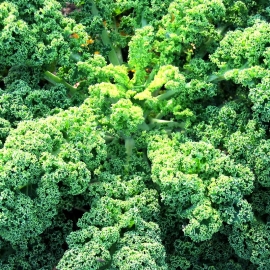 EXCLUSIVE
EXCLUSIVE
«Bright Green» - Organic Kale Seeds
1.14 €
Tender light-green leaves with a mildly sweet flavor. The plants are tall, vigorous, and high yielding. More tender than the extra-curly green varieties but not quite as cold hardy.
-
Organic Kale «Bright Green»
Tender light-green leaves with a mildly sweet flavor. The plants are tall, vigorous, and high yielding. More tender than the extra-curly green varieties but not quite as cold hardy.How to Grow
Cabbages are versatile vegetables with many varieties cropping throughout the year. Spring Cabbage is planted in early spring for mature heads later in the season. Summer Cabbage is sown in April ready to cut in August, Winter Cabbage, sown May for cutting November onwards and Savoy Cabbage, easily recognisable and mainly grown for winter harvest although some varieties mature as early as September and others as late as March. Red cabbages have a much shorter harvest period of September to the end of November but do store well.
Cabbages are harvested by cutting through the stem just above ground level with a sharp knife. After harvesting cut a half inch deep cross in the stump of spring and summer cabbages and you'll be rewarded with a second crop of much smaller cabbages later in the year.
Cabbage, Kale and other brassicas need protecting from slugs, pigeons and caterpillars, all of whom will attempt to devour the crop before you can. Cabbages like a fertile, well draining, moisture retentive, firm soil. The main crop beds should be dug over and firmed a few months before planting.
Cabbage and Kale seed can be sown either directly into a seed bed, or started off in growing cells or seed trays under cover. Seeds should be sown thinly and thinned out to 3 inches as they develop. Germination usually takes 7 to 14 days. Seedlings are ready for transplanting when they have 5 or 6 leaves.
Use a dibber to make a hole large enough to accommodate the root ball and firm the soil around the plant. Spacing between plants varies, for compact heads space at 30cm, for large heads allow 45cm and leave just 15cm between spring cabbage to encourage their conical shape.
Keep the young plants weed free and well watered until established and then only water during dry periods.
